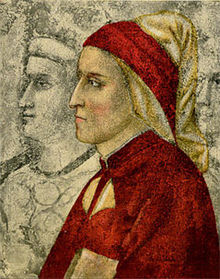Divine Comedy
by Dante Alighieri
Summary
Dante's Divine Comedy is the
masterpiece of the Italian language. Written between 1308 and 1321, the
three-part epic poem is well-known as a literary classic. The poem
features Dante as the main character (though it is fiction), and
describes his journey through Hell (Inferno), Purgatory
(Purgatorio)
and
Heaven (Paradiso). He meets many angels, demons, and other human
travelers on this trip, and his guides are the Latin poet Virgil and
Beatrice, a woman he loved. Under the surface, though, Divine
Comedy
is
an allegory. Dante uses his journey to represent the soul's movement
toward God, and the poem has many other religious themes, mostly
gathered from the medieval theology of Thomas Aquinas. The poem is
extremely intricate, and mathematical and scientific patterns can be
found throughout. Dante also makes many cultural references and
allusions, Greek and Roman myth provide many of the characters and
history, and the story even has political themes. Divine Comedy
is a
work that explores the afterlife from a medieval perspective. It is a
fascinating read that will entrance all who take the journey with
Dante.
Abby Zwart
CCEL Staff Writer
Abby Zwart
CCEL Staff Writer
Popularity
Available formats

